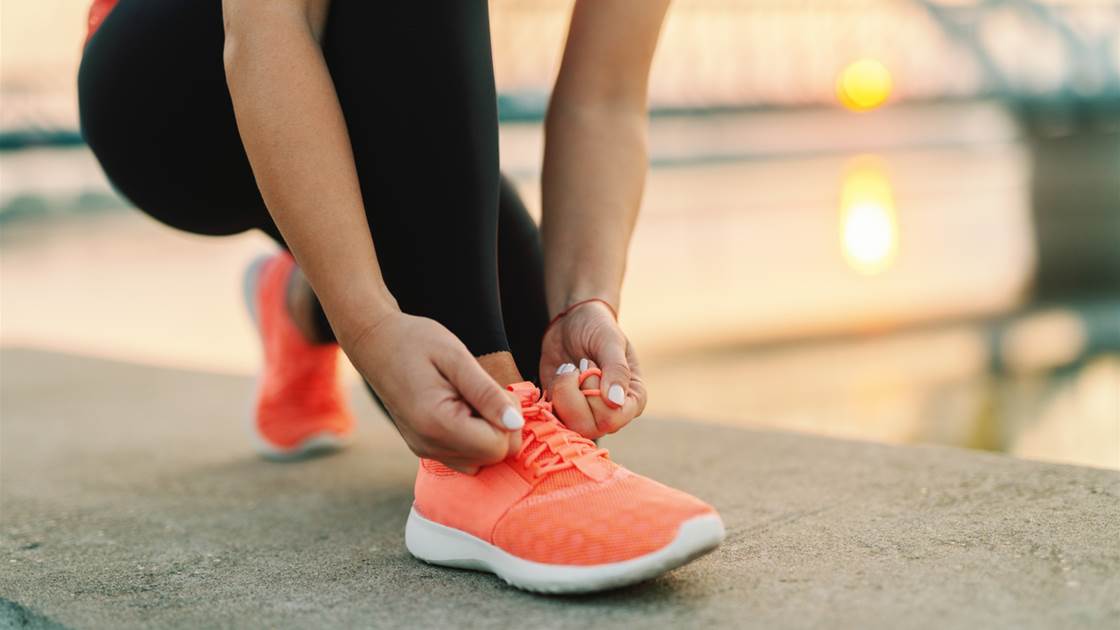Have a hefty weight loss goal? You don't need to spend hours upon hours in the gym to drop kilos-in fact, you probably don't need a gym membership at all. One of the most powerful ways to lose weight is simple: Walk!
Walking for weight loss may even be more effective than running, according to a British study. Researchers found that people who regularly took brisk walks weighed less than those devoted to other types of physical activity, including running, swimming, and cycling.
Why walking is so good for you
Walking is astonishingly powerful and scientifically proven by study after study - walking transforms your body and mind. In fact, research shows it can add almost two years to your life. Of course, there’s the major perk that sneaking in those steps helps you shed unwanted weight; one Canadian study found that an hour-long brisk walk every day reduced belly fat in women by 20% over 14 weeks. But going for a trek can benefit your body in other significant ways too. Here’s how:
- It guards your brain. Two hours of walking per week cuts your risk of stroke by 30%. Hitting the road also protects brain regions associated with planning and memory, and doing it for 30 minutes a day has even been found to reduce symptoms of depression by 36%.
- It strengthens your bones. Four hours of walking per week can slash your chances of a hip fracture by up to 43%. In other words, the more you move now, the more mobile you’ll be later in life.
- It improves your heart health. Take a stroll for your ticker: A new study of more than 89,000 women found that those who walked briskly for 40 minutes two or three times per week had up to a 38% lower chance of heart failure after menopause than those who did it less often or more slowly. What’s more, researchers have found that walking for just 20 minutes per day lowers your risk of heart disease by 30%, and it can also cut your risk of obesity (a major risk factor for heart disease) in half.
Here at Prevention we truly believe that walking is one of the best exercises to do for weight loss and general health, which is why we're running the Prevention Virtual Walk. Get fit and lose weight with our 6-week training plan, culminating in a 10km walking challenge! Complete the challenge in your own neighborhood on Sunday, October 11. Reach your fitness goal; whether it’s to shift stubborn kilos, tone up, or re-set your health. To learn more or sign up for $35. Click here.
6 things to do before you start walking for weight loss
Depending on where you begin, you can expect to shed around 0.5-1 kilo per week with a new walking program, says dietitian Erin Palinski-Wade. (Good news: The heavier you start, the faster you'll shrink.) To get your new program up and walking-and have a good time along the way-follow these tips from Palinski-Wade, Smith, and orthopedic surgeon Dr Scott Mullen.
1) Check in with your doctor
Walking does work for just about everybody-but bumping up your activity level does put a strain on your muscles, joints, and heart. "If you haven't been exercising, running it by your primary care doctor is a good idea, just to make sure they don't have any concerns or think you need any testing ahead of time," says Mullen.
Once you've begun, stay alert for signs you're overdoing it. "Always listen to your body and pay attention to its signals," Smith says. "Pain, lightheadedness, or nausea can all signal that you are exerting yourself too much." Other red flags include chest pain, pain that shoots down your arm or up your neck, or severe headaches, Mullen says-if you develop them, stop your workout and check with your health care team.
2) Invest in a good pair of walking shoes
Got the all-clear? Good. Your next stop-a sporting goods or specialty shoe store, where you should pick up a pair of high-quality sneakers. Look for a shop that does gait analyses to help you select the right pair for your specific foot type, Mullen says. Go a half-size up from your regular work shoes, Smith advises, since feet tend to swell when you exercise.
3) Buy clothes designed for exercise
Walking doesn't require a closetful of expensive athletic wear, but investing in a few key pieces can make you much more comfortable on the sidewalk or path. Look for tops and bottoms in moisture-wicking fabrics, which sop up sweat to keep you comfortable, dry, and chafe-free. Choose styles with a bit of stretch, so they don't pinch if you take a bigger step or stride uphill, says Palinski-Wade.
4) Set realistic goals, and ease into your new workout routine
Start where you are if you haven't worked out in a while, that could mean fitting in 10 minutes of motion each day, Palinski-Wade says. Each week, boost that daily total by 5 minutes. This slow, steady ramp-up gives your body a chance to adapt, reducing your risk of injury as you get fitter.
"One of the great things about exercise in general but especially with walking is that it really can be cumulative during the day," Palinski-Wade says. If you feel overwhelmed by a 30- or 60-minute total, break it up into three 10-minute segments. You'll burn just as many kilojoules and net the same health benefits with less stress on your schedule.
At first, keep your pace comfortably challenging-you should be able to speak a few sentences, but not carry on a lengthy conversation without effort, Palinski-Wade says. Maintain a steady program and you'll build endurance-you'll notice that you can naturally walk faster with less effort.
After a few weeks of steady striding, add in some speedier intervals-brief bursts of faster walking-to amp up your results. Researchers have found people who varied their walking pace burn up to 20% more kilojoules than those who stride at a steady pace.
5) Prepare for aches and pains
With any new routine, a small amount of soreness comes with the territory-for instance, your calves might feel tight the day after you walk uphill, Palinski-Wade says. For minor muscle aches-the kinds of things that hurt a bit but feel better once you start moving-apply ice.
Take a day off if soreness alters your gait or limits your movements, or if your aches occur around your joints rather than just in your muscles, Mullen advises. Pain directly behind your kneecap, around your Achilles tendon, or in your ankles or hips could mean you're pushing harder than you should. If a few days of rest and icing don't resolve these issues, see a sports doc or physical therapist for advice.
6) Start a weight loss journal
Stay motivated by tracking your progress in a training journal, Palinski-Wade suggests. You don't need to get crazy-detailed-just note how far you walked and how long it took you, plus your incline if you're on the treadmill. Over time you'll start to see signs of improvement -"not just on the scale but in your fitness. That can be really motivating," she says.









